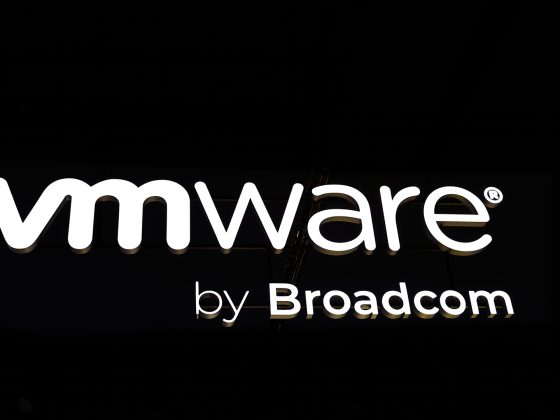Over the past few months, I made the choice to move from the AWS ecosystem to Google Cloud — both great clouds! — and I think it’s made me a stronger, more well-rounded technologist.
But I’m just one data point in a big trend. Multicloud is an inevitability in medium-to-large organizations at this point, as I and others have been saying for awhile now. As IT footprints get more complex, you should expect to see a broader range of cloud provider requirements showing up where you work and interview. Ready or not, multicloud is happening.
From our partners:
In fact, Hashicorp’s recent State of Cloud Strategy Survey found 76% of employers are already using multiple clouds in some fashion, with more than 50% flagging lack of skills among their employees as a top challenge to survival in the cloud.
That spells opportunity for you as an engineer. But with limited time and bandwidth, where do you place your bets to ensure that you’re staying competitive in this ever-cloudier world?
You could pick one cloud to get good at and stick with it; that’s a perfectly valid career bet. (And if you do bet your career on one cloud, you should totally pick Google Cloud! I have reasons!) But in this post I’m arguing that expanding your scope of professional fluency to at least two of the three major US cloud providers (Google Cloud, AWS, Microsoft Azure) opens up some unique, future-optimized career options.
What do I mean by ‘multicloud fluency’?
For the sake of this discussion, I’m defining “multicloud fluency” as a level of familiarity with each cloud that would enable you to, say, pass the flagship professional-level certification offered by that cloud provider–for example, Google Cloud’s Professional Cloud Architect certification or AWS’s Certified Solutions Architect Professional. Notably, I am not saying that multicloud fluency implies experience maintaining production workloads on more than one cloud, and I’ll clarify why in a minute.
How does multicloud fluency make you a better cloud engineer?
I asked the cloud community on Twitter to give me some examples of how knowledge of multiple clouds has helped their careers, and dozens of engineers responded with a great discussion.
Turns out that even if you never incorporate services from multiple clouds in the same project — and many people don’t! — there’s still value in understanding how the other cloud lives.
Learning the lingua franca of cloud
I like this framing of the different cloud providers as “Romance languages” — as with human languages in the same family tree, clouds share many of the same conceptual building blocks. Adults learn primarily by analogy to things we’ve already encountered. Just as learning one programming language makes it easier to learn more, learning one cloud reduces your ramp-up time on others.
More than just helping you absorb new information faster, understanding the strengths and tradeoffs of different cloud providers can help you make the best choice of services and architectures for new projects. I actually remember struggling with this at times when I worked for a consulting shop that focused exclusively on AWS. A client would ask “What if we did this on Azure?” and I really didn’t have the context to be sure. But if you have a solid foundational understanding of the landscape across the major providers, you can feel confident — and inspire confidence! — in your technical choices.
Becoming a unicorn
To be clear, this level of awareness isn’t common among engineering talent. That’s why people with multicloud chops are often considered “unicorns” in the hiring market. Want to stand out in 2022? Show that you’re conversant in more than just one cloud. At the very least, it expands the market for your skills to include companies that focus on each of the clouds you know.
Taking that idea to its extreme, some of the biggest advocates for the value of a multicloud resumé are consultants, which makes sense given that they often work on different clouds depending on the client project of the week. Lynn Langit, an independent consultant and one of the cloud technologists I most respect, estimates that she spends about 40% of her consulting time on Google Cloud, 40% on AWS, and 20% on Azure. Fluency across providers lets her select the engagements that are most interesting to her and allows her to recommend the technology that provides the greatest value.
But don’t get me wrong: multicloud skills can also be great for your career progression if you work on an in-house engineering team. As companies’ cloud posture becomes more complex, they need technical leaders and decision-makers who comprehend their full cloud footprint. Want to become a principal engineer or engineering manager at a mid-to-large-sized enterprise or growing startup? Those roles require an organization-wide understanding of your technology landscape, and that’s probably going to include services from more than one cloud.
How to multicloud-ify your career
We’ve established that some familiarity with multiple clouds expands your career options. But learning one cloud can seem daunting enough, especially if it’s not part of your current day job. How do you chart a multicloud career path that doesn’t end with you spreading yourself too thin to be effective at anything?
Get good at the core concepts
Yes, all the clouds are different. But they share many of the same basic approaches to IAM, virtual networking, high availability, and more. These are portable fundamentals that you can move between clouds as needed. If you’re new to cloud, an associate-level solutions architect certification will help you cover the basics. Make sure to do hands-on labs to help make the concepts real, though — we learn much more by doing than by reading.
Go deep on your primary cloud
Fundamentals aside, it’s really important that you have a native level of fluency in one cloud provider. You may have the opportunity to pick up multicloud skills on the job, but to get a cloud engineering role you’re almost certainly going to need to show significant expertise on a specific cloud.
Note: If you’re brand new to cloud and not sure which provider to start with, my biased (but informed) recommendation is to give Google Cloud a try. It has a free tier that won’t bill you until you give permission, and the nifty project structure makes it really easy to spin up and tear down different test environments.
It’s worth noting that engineering teams specialize, too; everybody has loose ends, but they’ll often try to standardize on one cloud provider as much as they can. If you work on such a team, take advantage of the opportunity to get as much hands-on experience with their preferred cloud as possible.
Go broad on your secondary cloud
You may have heard of the concept of T-shaped skills. A well-rounded developer is broadly familiar with a range of relevant technologies (the horizontal part of the “T”), and an expert in a deep, specific niche. You can think of your skills on your primary cloud provider as the deep part of your “T”. (Actually, let’s be real — even a single cloud has too many services for any one person to hold in their heads at an expert level. Your niche is likely to be a subset of your primary cloud’s services: say, security or data.)
We could put this a different way: build on your primary cloud, get certified on your secondary. This gives you hirable expertise on your “native” cloud and situational awareness of the rest of the market. As opportunities come up to build on that secondary cloud, you’ll be ready.
I should add that several people have emphasized to me that they sense diminishing returns when keeping up with more than one secondary cloud. At some point the cognitive switching gets overwhelming and the additional learning doesn’t add much value. Perhaps the sweet spot looks like this: 1< 2 > 3.
Bet on cloud-native services and multicloud tooling
The whole point of building on the cloud is to take advantage of what the cloud does best — and usually that means leveraging powerful, native managed services like Spanner and Vertex AI.
On the other hand, the cloud ecosystem has now matured to the point where fantastic, open-source multicloud management tooling for wrangling those provider-specific services is readily available. (Doing containers on cloud? Probably using Kubernetes! Looking for a DevOps role? The team is probably looking for Terraform expertise no matter what cloud they major on.) By investing learning time in some of these cross-cloud tools, you open even more doors to build interesting things with the team of your choice.
Multicloud and you
When I moved into the Google Cloud world after years of being an AWS Hero, I made sure to follow a new set of Google Cloud voices like Stephanie Wong and Richard Seroter. But I didn’t ghost my AWS-using friends, either! I’m a better technologist (and a better community member) when I keep up with both ecosystems.
“But I can hardly keep up with the firehose of features and updates coming from Cloud A. How will I be able to add in Cloud B?” Accept that you can’t know everything. Nobody does. Use your broad knowledge of cloud fundamentals as an index, read the docs frequently for services that you use a lot, and keep your awareness of your secondary cloud fresh:
- Follow a few trusted voices who can help you filter the signal from the noise
- Attend a virtual event once a quarter or so; it’s never been easier to access live learning
- Build a weekend side project that puts your skills into practice
Ultimately, you (not your team or their technology choices!) are responsible for the trajectory of your career. If this post has raised career questions that I can help answer, please feel free to hit me up on Twitter. Let’s continue the conversation.
By: Forrest Brazeal (Head of Content)
Source: Google Cloud Blog
For enquiries, product placements, sponsorships, and collaborations, connect with us at [email protected]. We'd love to hear from you!
Our humans need coffee too! Your support is highly appreciated, thank you!




